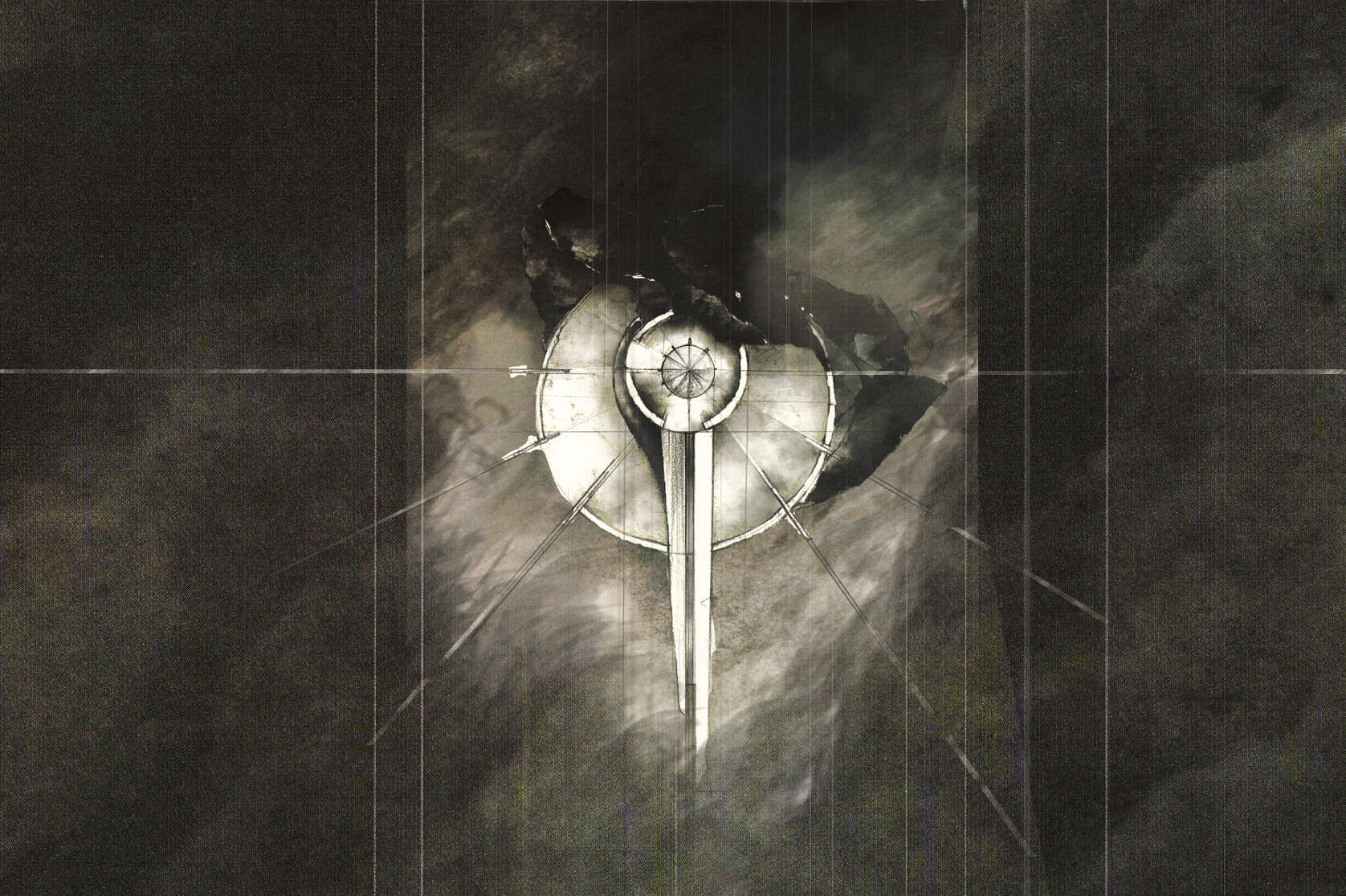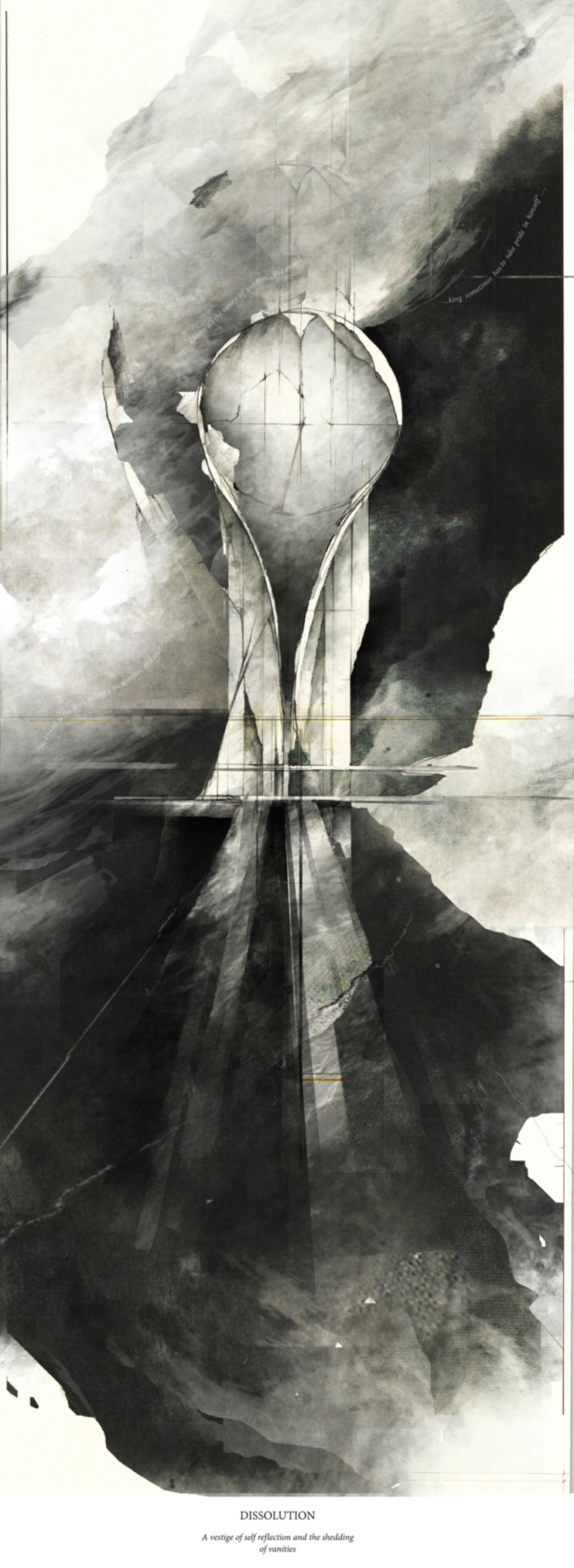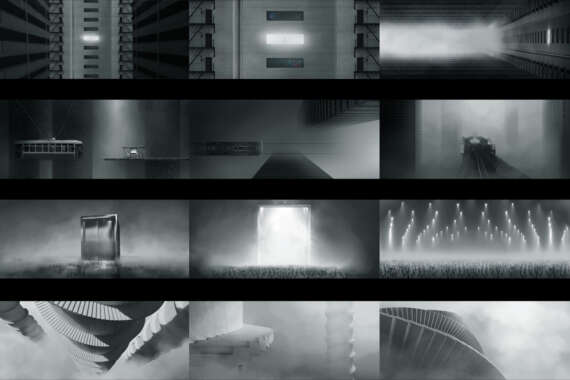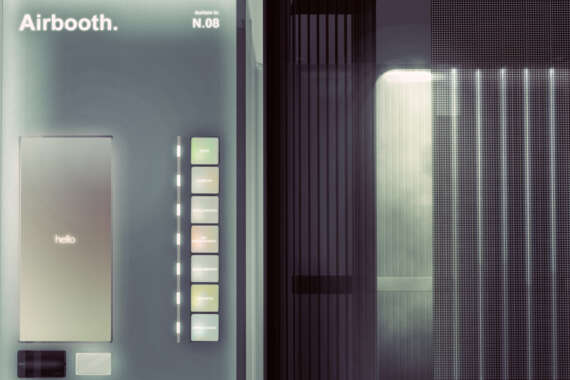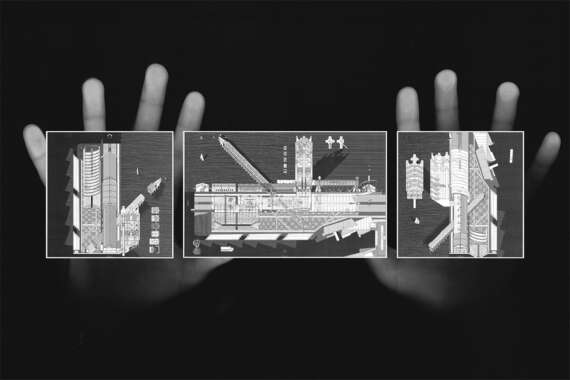Proceeding through a series of drawn experiments, this exploration interprets the elaborate procedures of alchemy and mythic narrative outlining a framework for drawing and architectural speculation of transformations of state as it identifies moments of an emergent self through connection with landscape.
Paulo Coelho’s The Alchemist frames the inquiry into the spatial role of the journey over several stages, as the position of the novel’s protagonist is utilised in order to explore the role of extreme landscapes in the process of transformation. The novel’s stages of immersion, transition and displacement frame this thesis’s enquiry into the relationships of identity and landscape in seeking an existence within the liminal.
The elaborate transformative procedures of alchemy, enacted and embodied both psychologically and physically, are interpreted to cast speculation on the coalescing interiority of landscape ‘and self’. Such alchemical journeys seek to unite the interior of nature with that of the alchemist’s own psyche, conducting laborious procedures in the hope of achieving such transformation.
Conditions of interiority are understood in this thesis as discussed within a psychoanalytical context by Charles Rice, Professor of Architecture at the University of Technology Sydney. Within such a framework, conditions of interiority adopt a physical and psychological manifestation, as physical objects are argued to reflect and inform a spatialisation of a psychological interior. Following this passage of thought, this thesis considers drawings to be objects that may act as mediator between physical and psychological interiority.
This visual inquiry establishes seven stages of transformations of state, exploring the transient relationship between traveller and landscape. These moments serve as drawn and architectural markers for these points of transformation, speculating on the role of architecture as a vessel of connection between extreme landscapes and travellers, each through the interior.
Aligned with the novel, this thesis proposes a spatial pilgrimage, outlined over seven stations, which may serve to displace the wayward traveller along an imagined journey toward an alternate centre, marking moments of transformation through the interior.
